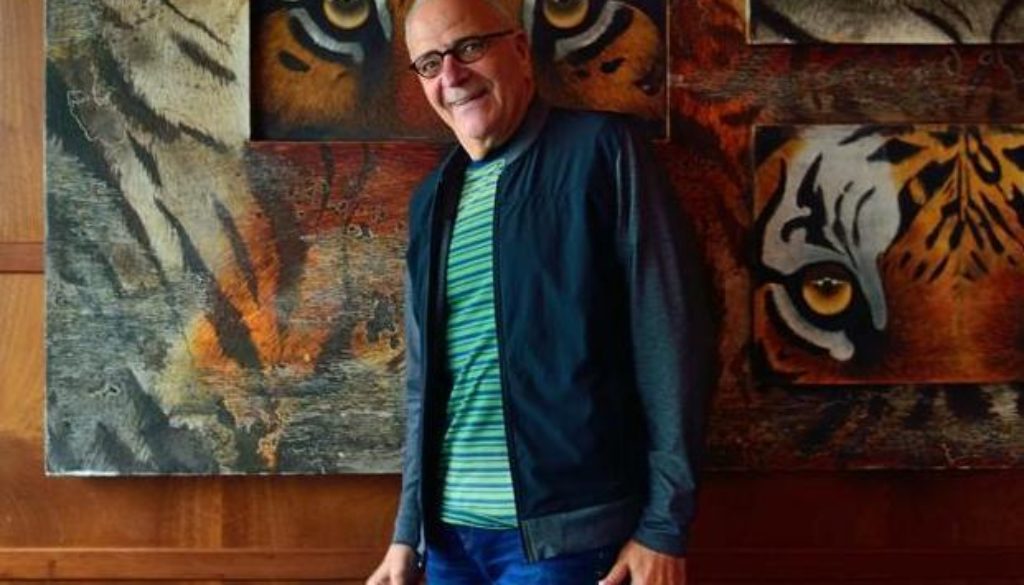Formal footwear is facing extinction, says Skechers’ Marvin Bernstein
Marvin Bernstein, managing partner at the Swiss subsidiary of US footwear brand Skechers, talks about his India plans and the latest trends in the global footwear industry

New Delhi: American footwear brand Skechers is moving beyond footwear in India and has recently introduced apparel and accessories. The brand, which operates through a joint venture with Kishore Biyani-led Future Group, entered India in 2012 and currently operates 90 stores across the country.
“But we are expanding rapidly. We have 50-60 stores coming up in tier-I and tier-II cities this year,” says Marvin Bernstein, managing partner of Skechers Sàrl, the Swiss subsidiary of Skechers USA Inc. that oversees the company’s sales, marketing and operations outside the US. Launched in 1992, Skechers has a presence in 140 countries.
Bernstein is bullish about the Indian market which he calls “a low-hanging fruit”. In an interview, Bernstein talks about his India plans, the latest trends in the global footwear industry and the last time he wore formal shoes. Edited excerpts:
You have been in the footwear industry for more than 40 years. How have things changed globally and in India?
Footwear has gone very casual over the last five-six years. The biggest chunk of footwear sales, right now, is athletic driven and that’s a trend which is going to stay for a while. Of course, comfort has a huge role to play in that.
There are a couple of reasons behind this casualization. Globally, there is a wave of fitness craze and it is growing very rapidly among people. Secondly, the footwear industry is being driven by young people, who like casual footwear. This also has much to do with the start-up culture which has changed the whole workplace dress code.
Is formal as a segment shrinking?
Yes, definitely. Around the world, it has gotten very small. In India, formal is still a growing business but it is facing extinction in a lot of countries now. Like the leather formal footwear industry in Italy is almost gone. In fact, leather footwear itself is getting very casual and athletic-driven.
I personally haven’t worn a pair of formal shoes in a long time, except at one of my parent’s funeral.
What are your current global revenues?
We are a $4 billion company and that is just in footwear. We are present in 140 countries. We recently had our first billion-dollar quarter in 2016. We have just started apparel and accessories business with products like backpacks, watches, shoe care and track pants. Apparel and accessories is currently 5% of our overall revenue but we are growing rapidly. In India, we have just launched apparel at our store in Gurgaon. The products will be priced between Rs2,000 and Rs7,000.
The US constitutes 49% of our business, and 51% of the revenues come from international business. Countries like the UK, Germany and China are huge markets for us.
What are your expansion plans for India?
Our brand has done very well in India ever since we entered four years ago. Right now, we are in that explosive phase where we are building critical mass. Indian market is a low-hanging fruit. We have a partnership with retailers who have excellent exposure in the tier-I cities. We recently increased our stake in our joint venture with Future Group from 49% to 51%.
About 50% of the population in India is under the age of 35 years. Because of this, the athletic-driven business is becoming very strong here. We are planning to open a lot of franchise stores in India. We are looking to add 50-60 stores every financial year (both franchise and company-owned), for the next few years. We are committed to the Indian market, whatever it takes.
How much does India contribute to your overall revenue?
It is a very small percentage, not worth mentioning, given that we launched here just four years back. We have moving revenue targets because the market is growing very quickly. In fact, we have overshot all our growth and revenue targets in the past.
For the last two years, we have been growing here at a rate of 100% (year-on-year) and we expect this sort of growth rate for the next couple of years. Over the next five years, we believe India will probably be one of the top five markets for us.
Currently, what are the most striking trends in the footwear industry globally?
Sandal sales are crazy right now, all over the world. In India, sandals used to be a very small percentage of our business but we are now seeing growth of about 60-70% annually. It is trending worldwide. I think this growth has much to do with the comfort level.
What is your digital strategy?
We are trying to address the digital requirements through our own e-commerce platform. We also do business with third party e-commerce companies. But, e-commerce for us is more of a marketing tool which helps us grow business for our customers. In India, e-commerce as a channel is still getting developed and it is more of a promotional platform.
In those terms, our digital strategy is different from other companies. We are not dependent much on online sales. In India, digital contributes about 7% to our overall revenue. Having said that, e-commerce surely is an important platform.
What do you think about the goods and services tax?
To be candid, taxes going up or going down doesn’t impact anybody much. It’s just a lot of noise. People don’t like change. Whether taxes go up or down, they won’t stop shopping; they are still going to buy what they want. It’s a very short-term impact till everyone gets used to it.
What is your favourite brand, apart from Skechers?
I have been wearing Skechers for the last five years, apparel and footwear both. I have fallen in love with the brand. I buy jeans because we don’t make them. I shop at Pepe Jeans. There is no social pressure but I don’t feel like wearing any other brand but Skechers.
What is your personal style?
It’s very casual. I rarely get dressed in formal. A casual and comfortable lifestyle is what I like to have and I think that is what most people do too.




